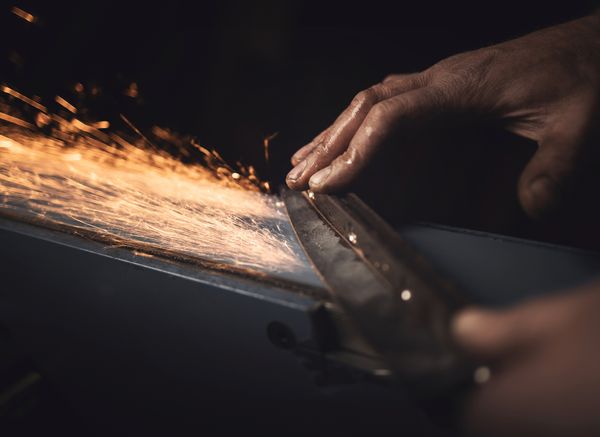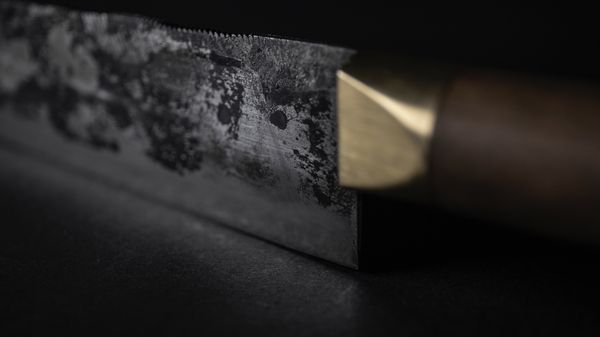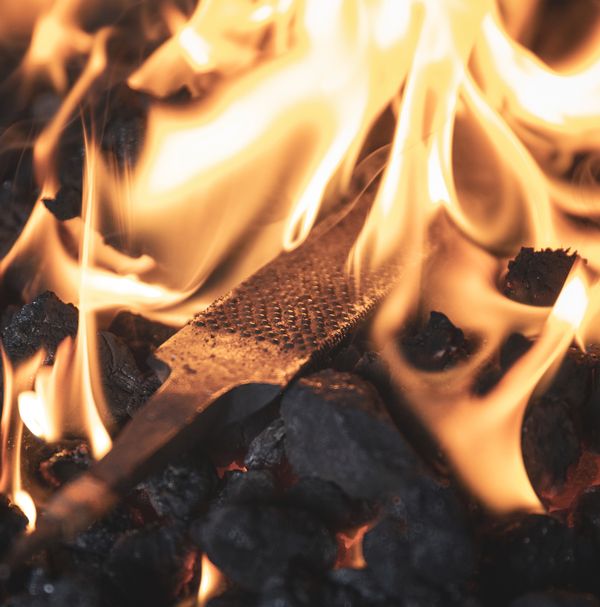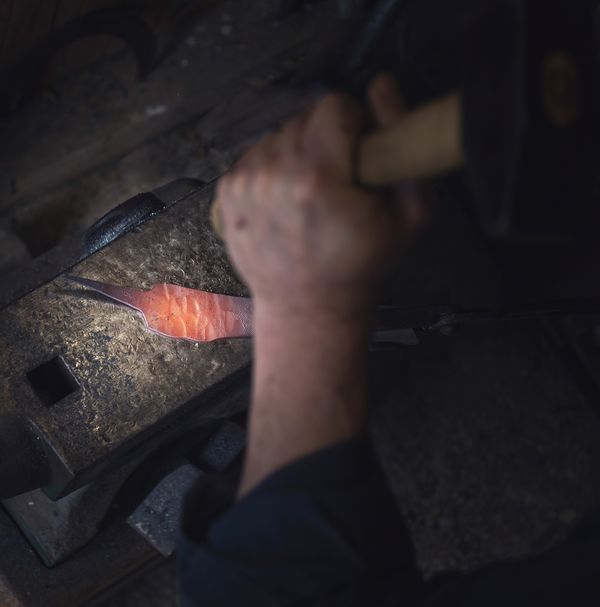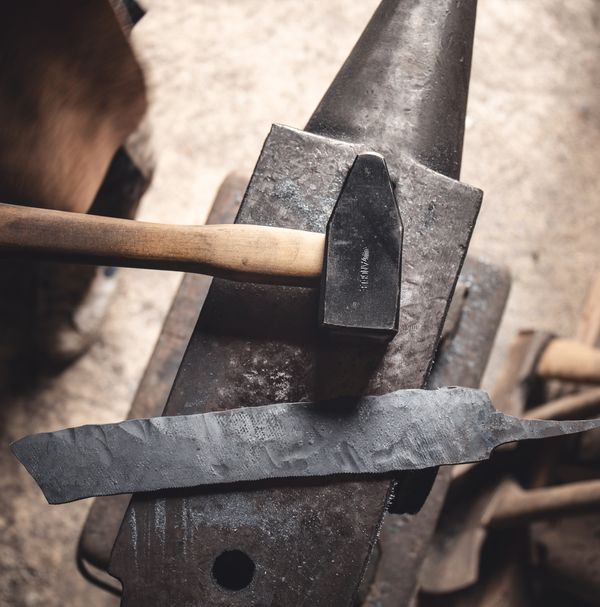
Nico Zendel
Nico Zendel is a creative polymath: he’s the product designer at Gaggeanu but also a knifemaker in his spare time. From conception to creation, Nico is intimately involved in the process of making knives that are not only functional but also tell a story
Words Catherine McMaster
Photography Alexander Stuhler
Knifemaking is an ancient craft. Man’s ingenuity and necessity have produced cutting tools for millions of years. The first knives were made with stone, then by 3000 –700BC man had copper, and by 1000BC, iron. From crude survival implements to ornate ceremonial blades, knifemaking has undergone various iterations.
Function marries form in knifemaking. Beauty fuses with utility, and creativity is clipped with necessity. Knives are emotive objects; the hero pieces of the kitchen, we both rely on them for their usefulness, ease and beauty. It should come as no surprise that knifemaking is a celebrated craft.
Although not a popular one. The expectation on resources (a workshop, and the blades, tools and materials that inhabit it), and the manual labour it entails (approximately 20 hours for one knife), means that it’s only a select few of creatives who consider themselves ‘knifemakers’.
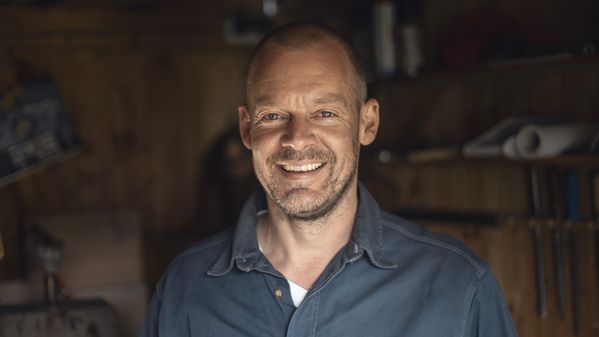

Product Designer at Gaggenau, Nico Zendel, is one of them. Zendel’s day-to-day job involves the creation of new home appliances which align with the customer’s needs and with the Gaggenau brand. It’s creative work but also highly streamlined. Outside of his nine-to-five, Zendel is a skilled knifemaker. It is a ‘hobby’, he tells me, that he has been practising for ten years.

It started when Zendel and his brother decided to attend a knifemaking course. From that weekend, Zendel bought all of the necessary tools and began forging (‘I was forging better than the others’, he explains). It came naturally, a legacy from his father who was a pilot but kept up his hobby as a schlosser. ‘He built 80% of our family home’, Zendel says. ‘It was also a hobby for him, building things and not buying things.’
Zendel grew up in a close-knit community in a parochial Bavarian village called Walpershofen, between Munich and Stuttgart. Close to nature and the forest, emphasis was always on handicraft: ‘I was always a creative kid, always sketching things in my mind. I did a lot at the workshop of my father, I was always sitting with him and asking him how I would do “this” or “that’.

Now, Zendel, who lives close to the Alps in Weyard and a mere 180km from where he grew up (‘I am emotionally connected to this area’ he says) has his own workshop peppered with knifemaking tools, forager equipment and industrial materials. The props, while necessary, are preliminaries. To be a knifemaker you need intense patience, a fastidious attention to detail and a ferocious energy to perfect your skill.
‘It is interesting to do knives because there are several processes in knifemaking, from the fire and heat, to the heavy weight work with the hammer and the choil’, Zendel explains. ‘On the one hand you work with the metal, but also with the wooden parts as well.’

The recipe for knifemaking is not a simple one. Consider the endless variety of styles and substance (metal and wood, steel and iron), the different geometries of handles and the endless ways to grind the file and adjust it to the correct angle. A falsity can result in an ineffective knife. It’s an emotional and physically taxing process, which requires intense concentration, absorption and skill.
‘Emotion is very important to me because I am a very emotional person’, Zendel says. ‘Knifemaking is very archaic and special.’ Indeed, the first human-smelted iron objects date back to 2500BC and the invention of the cutting edge goes hand in hand with human survival.
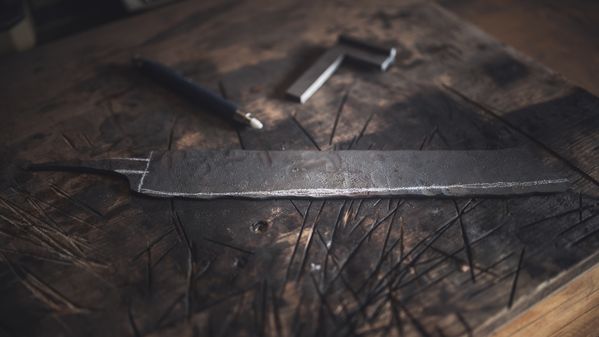

Unsurprisingly, Zendel’s designs are less utilitarian focussed and more designed to ignite emotion and nostalgia in the receiver. An example is from a friend of Zendel’s who requested that he make a knife from an old file (the material used to make the blade) of his recently deceased father. Older files are in fact very good for knifemaking, as they are made of high-grade tool steel with higher carbon density (‘carbon is important for hardening the blade after foraging and grinding’) and Nico gladly accepted the commission.
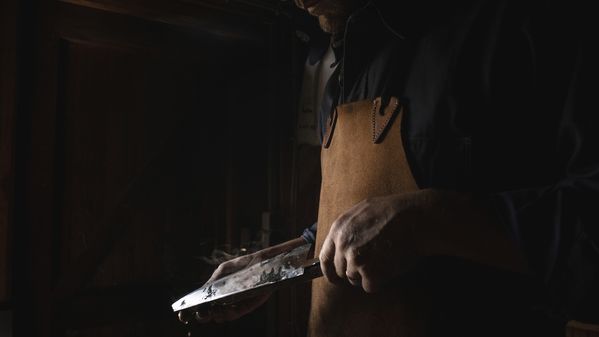

‘When I gave it to him [the finished knife], he was so happy. He is so happy to have something in his kitchen that he can use every day and think of his father. Knives are personal and emotional.’
Knifemaking is highly sensory and requires an intuitive touch. It demands lightness of the grasp and grind of the blade, but enough physical stamina and strength to forge. Any blacksmith knows that they need equal part strength and agility. ‘It is all about material precision and handcrafting,’ explains Zendel.
Zendel isn’t looking or grasping for perfection in his knives. Rather, it’s the imperfection which makes his knives special. Whether it’s the slightly aged piece of steel or the ever-so-blemished wood from the local apple tree: ‘the imperfection makes a perfect story for a knife’.
And that’s what it is: a story. From conception to creation, Zendel weaves and works in his own personal touch. They may not be ‘perfect’, but they are most certainly emotive instruments which tell a tale.


